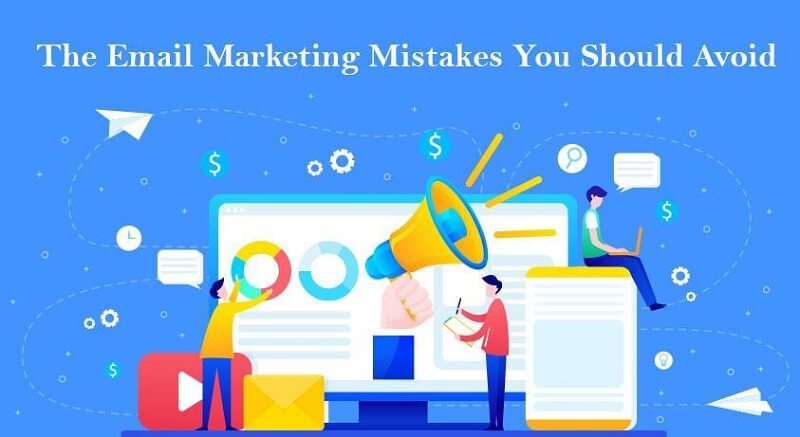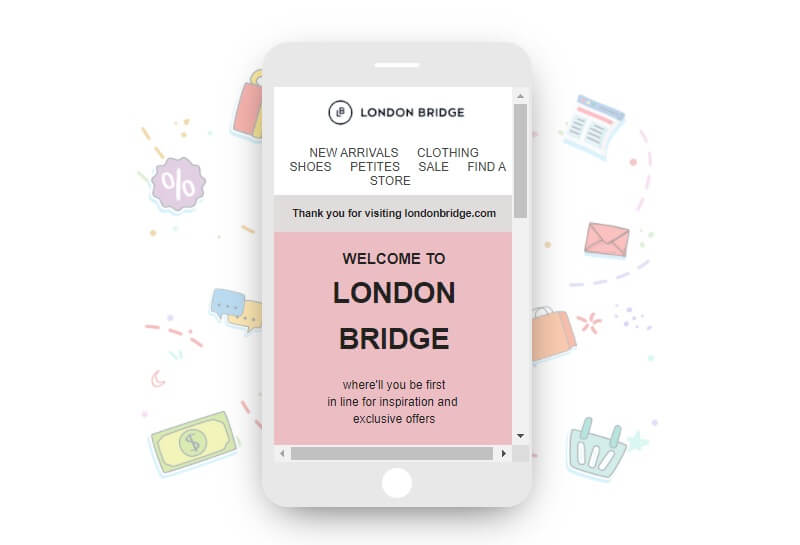
Hey guys, today in this article, we are going to discuss the email marketing mistakes you should avoid. So keep reading.
Email marketing has long been one of the most potent tools small businesses can use to reach out to potential customers and sell their products and services.
Unfortunately, it’s also one of the most accessible tools to misuse. By making any of these seven common mistakes in your email marketing, you may find yourself facing the consequences such as an increase in spam complaints, unsubscribes, or even lawsuits by unhappy customers.
These are all things that no business wants to happen to them, so make sure you avoid these email marketing mistakes at all costs. Here are seven email marketing mistakes you should avoid.
Mistake #1: Not Personalizing Your Email Marketing Messages
Many people don’t take advantage of personalizing the email marketing messages, which means they send out mass emails and don’t give recipients any context about who they are.
This is a huge mistake because it makes your emails less relevant to recipients and also gives them no incentive to open or click through in the future.
Solution:

Get recipient-specific data as early as possible—ideally when they sign up—and start using it immediately. Personalize every email, from subject lines to the body content.
Even something as simple as a first name goes a long way to building trust with your potential customers and making them feel more connected to your business.
Make sure you always personalize every one of your emails, no matter what. So let’s say you’re sharing news about homes to rent in Sydney, make sure that you show it in the subject title. That little bit of extra effort could go a long way toward helping you build relationships that can pay off in significant ways down the road.
Mistake #2: Sending The Same Email To Your Entire List
Just because you’re sending a marketing email to your entire list doesn’t mean you have to send an all-about-me email.
When everyone receives your email, it will be evident that it was sent out en masse. Many subscribers may feel like they are being spammed and unsubscribe or mark you as spam. At worst, they may report your emails as spam or flag them as phishing scams.
Solution:
To avoid making these mistakes, personalize each message (you can do so in bulk) with name recognition—and more importantly, make sure every campaign has a clear call to action for what you want your readers to do next.
If you are selling a product or service, clearly state how and why someone should buy from you over another company.
Also, remember to write subject lines that reflect what is inside your email: if it’s an offer, don’t call it something else. That way, recipients know what they’re signing up for.
And try not to use ALL CAPS; many of us who receive hundreds of emails every day tend to ignore anything written in capital letters.
Mistake #3: Not Using A Responsive Design Template
Most of the emails are opened on a mobile device. When you send an email blast to your database, you might get unsubscribes or complaints from people who can’t read your emails.
If you don’t have a mobile-friendly email design, how do you expect someone on their smartphone to buy from you? Considering smartphones are designed to fit our hands, ensuring your emails are mobile-friendly makes sense.
Solution:

So what does mobile-friendly email mean? Your email should be responsive, with no cutting off of images, text, or anything else for that matter.
A good practice is to set up an easy way for subscribers who receive your emails on their mobile devices to forward them to their desktop clients or share them through social media. This can help give you an extra boost in overall click-through rates and traffic back to your website.
Several email service providers (ESPs) offer simple mobile responsive templates you can use right out of the box—check with yours to see if they do!
Mistake #4: Ignoring Unsubscribes And Spam Complaints
A popular misconception is that you should only pay attention to unsubscribes and spam complaints when they’re above a certain threshold. The truth is, as soon as one person unsubscribes or complains about your content, you should investigate what caused them to do so.
Solution:
More often than not, an issue causing these problems could be easily fixed by showing empathy toward your readership and adjusting something small—or by introducing someone unfamiliar with your brand to someone familiar with it for assistance.
It’s vital to remember that millions of people in your niche are working hard every day, too. What may seem like unusual behavior could just stem from a misunderstanding; take some time to analyze where things went wrong and fix them without losing sight of your audience.
Mistake #5: Failing To Test Your Email Marketing Campaigns Before Sending Them Out

It’s pervasive for companies to simply send out an email marketing campaign as soon as they create it. This is a big mistake, however, as you’ll end up getting a terrible open rate and uninspiring click-through rate.
Solution:
Instead, consider setting up A/B testing to send out your email to 10 percent of your mailing list and measure responses versus what happened when you sent your real email campaign.
If you aren’t happy with your results, try another subject line or even change up some of your messages to see if that improves performance. Your emails should work hard; don’t waste them by sending out campaigns before you fully understand their capabilities!
Mistake #6: Not Including An Opt-in or Unsubscribe Link In Every Email Marketing Message
Not including a valid opt-in or unsubscribe link in every email marketing message you send can be construed as spam by recipients, and these people will often flag your emails as spam in their email clients.
Not only is that bad for your sender’s reputation, but it can also lead to blocked emails and blacklists if enough people complain.
Solution:
Consider giving your reader an option to opt-in or out of future emails from you with every email you send. This way, if they are not interested in your following message, they can easily remove themselves from your list.
Also, avoid embedding links into images (called stealth text); many service providers treat them as text and block them automatically, so there’s no way for you to verify what happens when a recipient clicks on them.
Mistake #7: Not Using An Email Marketing Service Provider
If you send more than a few hundred emails per month, you should use an email service provider (ESP). If not, you’ll be paying too much for transactional and automated email services. There are also legal compliance issues to consider when sending emails without using an ESP.
Solution:
Studies have shown that marketers who use an email marketing service provider see better conversion rates than those who don’t. The best part? It’s a one-time investment that you can repeatedly use for multiple marketing campaigns.
A reliable, high-quality email marketing provider will offer valuable features and include ongoing analytics, so it’s a precious asset to your online business.
For example, use an email marketing provider like Mailchimp, Sendinblue to make sure you get the most bang for your buck with an established, reputable company. However, Mailchimp lacks some of the extensive features. In which you may have to look for the best Mailchimp alternatives.
Finally, using an ESP makes your life easier—it’s impossible to manage all of your subscribers from within your application anyway.
Wrapping Up!
Email marketing can be an extremely effective way to reach your customers and increase sales, but only if it’s done correctly. Avoid these common mistakes to make sure your email campaigns are successful.
Have you made any of these mistakes in your email marketing? Let us know in the comments!





